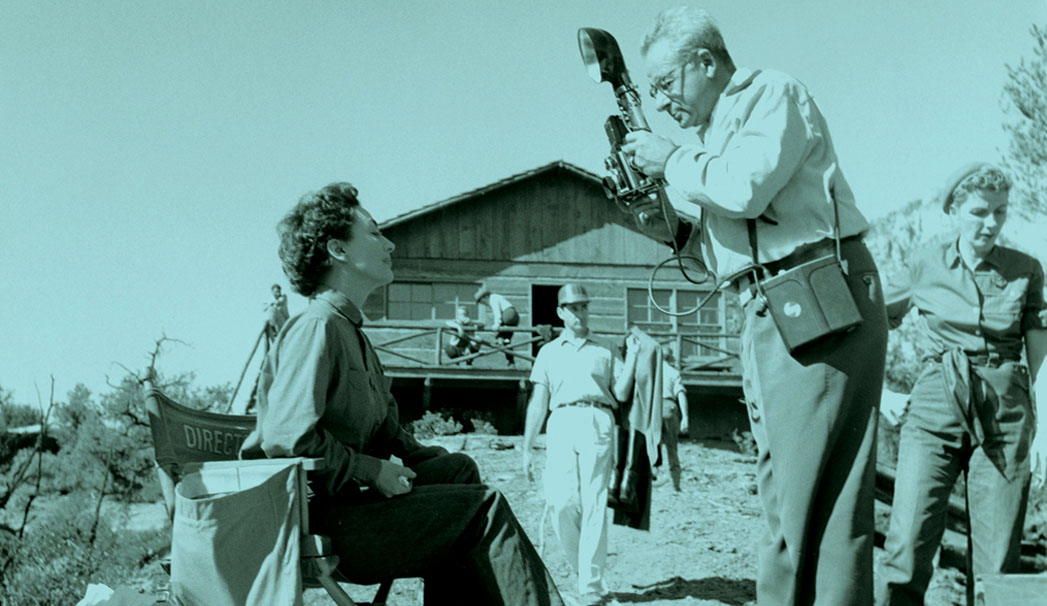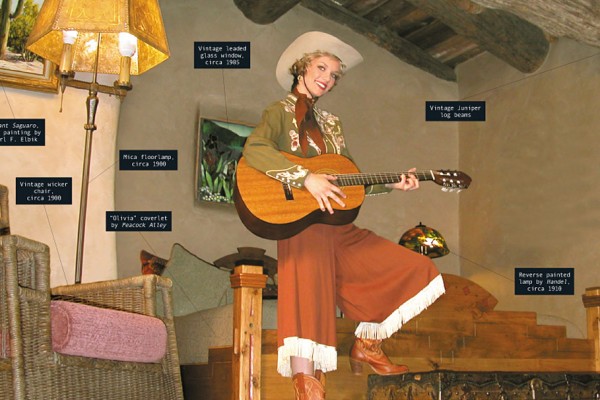Fifty years ago this month, a production crew from Hollywood set up in Sedona to begin shooting Johnny Guitar; 44 days later, they carried away the raw footage of a cowboy movie that eventually would be revered as a postwar cinematic masterpiece, a bold reflection on the darkening political storms of 1950s’ America — but only after first being reviled, by critics and even more vehemently by its own stars, as a garish, talky, incomprehensible mistake.
The story of the Johnny Guitar company’s visit to Sedona is as wild and wooly, as colorful and complicated, as the movie itself proved to be; the saga of this famously troubled production, played out in our hometown, is a real-life slice of local lore with juicy ingredients equal to the most over-the-top movie melodrama: raging divas, jealousy, anxiety, starstruck locals, rejection and, ultimately, redemption.
In the shadow of Coffee Pot Rock in West Sedona (then called Grasshopper Flats), Johnny Guitar‘s cast and crew assembled to begin work on Oct. 19, 1953. While their next six weeks in town would unfold into a steady stream of dramatic clashes, the project that brought them here was born from a series of business deals that could hardly have been cozier. Joan Crawford received the western novel by Roy Chanslor, a former newspaperman and “B” movie screenwriter (1943’s Tarzan Triumphs), before its May 1953 publication and snapped up the film rights. She later resold the rights to Republic Pictures with the stipulation she would star in the movie. Johnny Guitar was thus delivered to Republic as a package deal by Lew Wasserman, the dictatorial president of MCA, which was then Hollywood’s most powerful talent agency. MCA sewed up jobs for clients Crawford, Chanslor, director Nicholas Ray and screenwriter Philip Yordan to make the project happen. (MCA would get even mightier by buying Universal Pictures in 1962; Wasserman’s personal power eventually would reach all the way to the White House, as he was an instrumental behind-the-scenes force in the political rise of his former client Ronald Reagan.) Naturally, the agency collected a 10 percent commission at every turn for its efforts.




